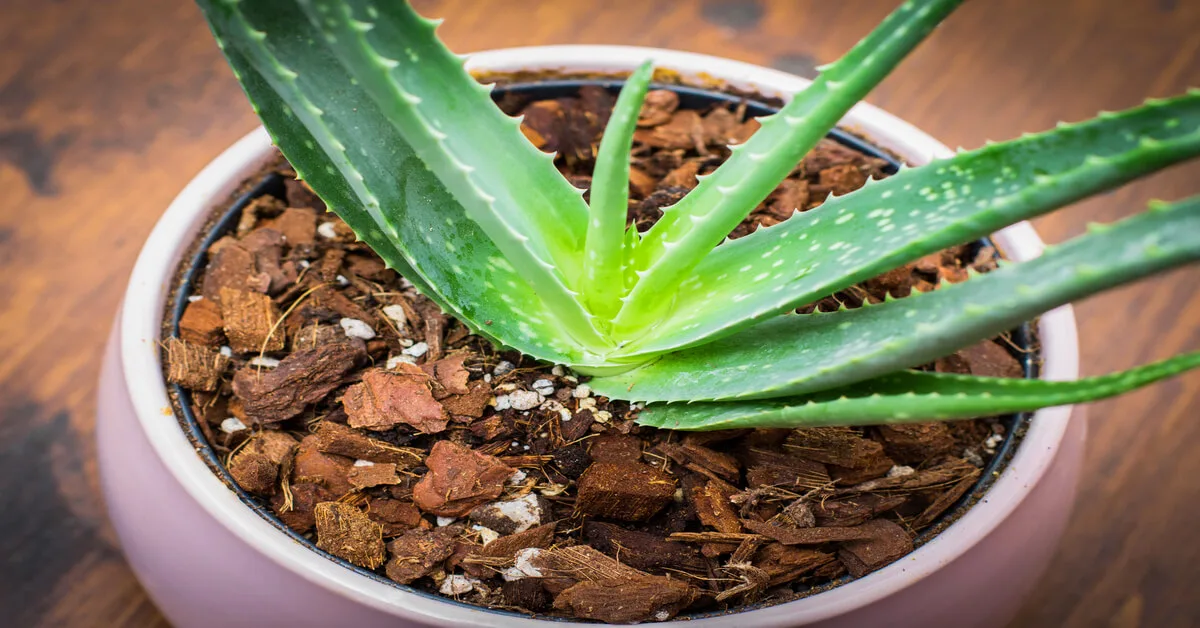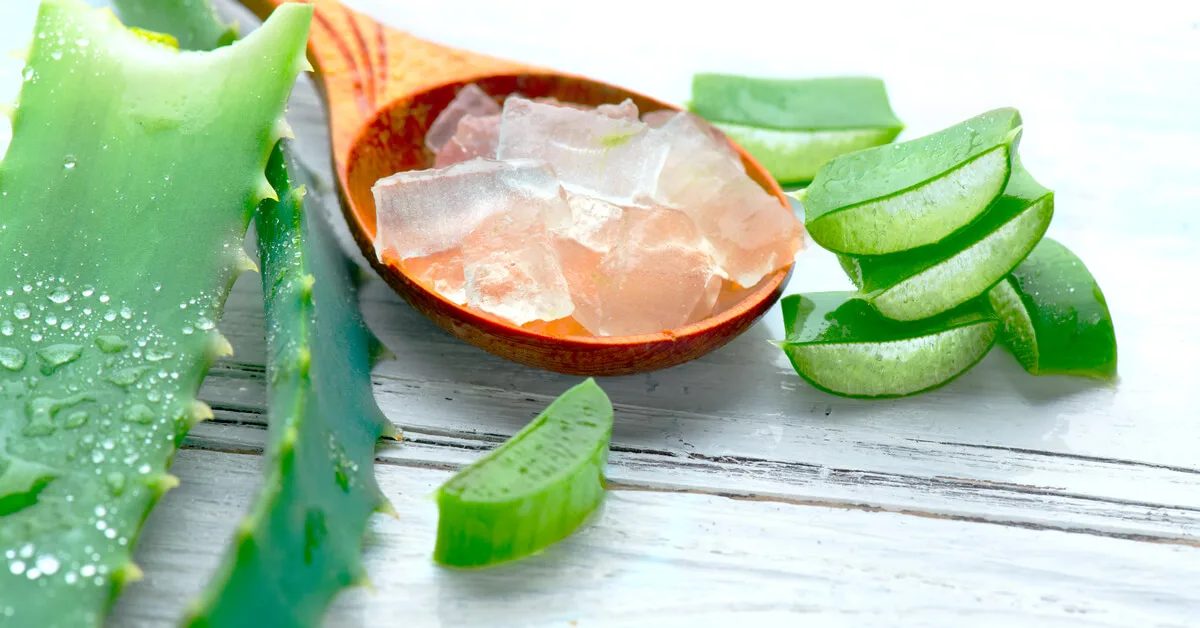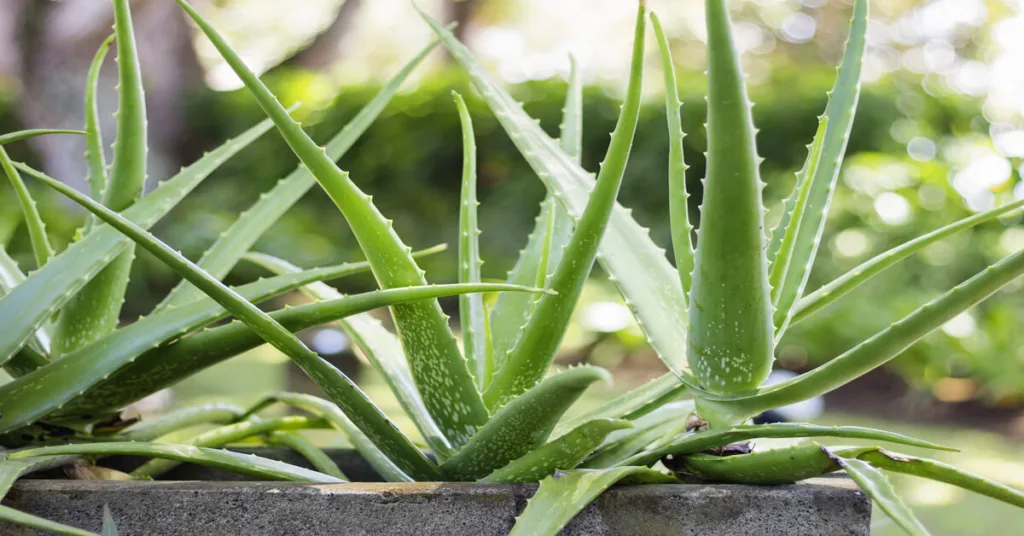Aloe barbadensis miller is an easy-to-grow houseplant. Although you may recognize the green succulent by the name of aloe or Aloe vera plant. This plant has gorgeous and thick gray to green long succulent leaves that produce a gel that has many uses.
Additionally, the succulent can flower and produce tubular yellow blooms. These flowers will not appear until the plant reaches maturity in around four years. As a houseplant, the bloom time for aloe flowers can vary. But when you grow aloe outdoors, they can bloom from early spring to late summer.
Do you want to learn how to grow aloe and care for the succulent plant? If so, we’re here to help. You can find everything you need to know about growing Aloe vera plant and its care in this article!
Aloe Vera Plant Origin
The Aloe vera plant has a long history, with evidence of its use dating back approximately 6,000 years [1]. It is believed that Aloe vera hails from the Arabian Peninsula. However, because of historical worldwide cultivation, researchers can’t say that with certainty. To ancient Egyptians, Aloe vera was the ‘plant of immortality’ because it grew without soil.
Fast forward to 1753, Aloe vera was classified as Aloe perfoliata var. vera, by Swedish botanist Carl Linnaeus. In 1768, botanist Nicolaas Laurens Burman, classified it as Aloe vera in Flora Indica. Also in 1768, botanist Philip Miller would go on to classify the plant, giving it the title of Aloe barbadensis [2].
In the 21st century, we scientifically classify the plant as Aloe barbadensis miller.
Aloe Vera Plant Care

The lifespan of an Aloe vera succulent is around twelve years. Although if you want your aloe plant to reach this ripe old age, you will need to know about the plant’s care.
From aloe’s watering requirements to the best soil type, GIY Plants is here to help! Below you can find everything you need to know about Aloe vera plant care.
Soil
To provide the best conditions for an Aloe vera plant, use cactus potting soil. Although, a standard potting mixture will also suffice if that is what you have on hand. If you choose to use the standard mixture, add extra perlite or sand. Ensure that no matter which soil you choose, that you place the aloe seeds, or plant in a pot that drains well.
Watering
Speaking of drainage, now let’s discuss watering. The best rule of thumb when growing aloe plants is to let their soil slightly dry in between each watering. You can test to see if it is beginning to dry by placing your finger 2″ dip into the pot of soil. How often this occurs depends on a few factors. Humidity levels and container drainage are some of the most critical factors.
Lighting
An Aloe vera’s light requirements are bright but indirect. So, consider placing the plant in a room with plenty of sunlight but away from the window.
Humidity & Temperature
For an Aloe vera plant to thrive, they need ambient temperatures to be between 65 to 85 or 18.3 to 29.4. Also, a Aloe vera’s humidity needs are around 40%. Typical indoor conditions are optimal for growing the succulent.
Fertilizing
Aloe vera plants need fertilizer no more than once a month. Some plant growers are successful at growing the plant without fertilizer. If you wish to fertilize your aloe plant, a half-strength houseplant fertilizer will work perfectly.
Propagation
If you want to learn how to propagate aloe from division, this section is for you.
First and foremost, we must acquaint ourselves with the aloe pup. Aloe vera pups are young offsets that the plant produces during its lifecycle. You will need to wait until one of these pups displays roots of its own to begin propagating.
When an aloe pup is ready for propagation, start by loosening and removing the pup roots. At this stage, the pup roots will be interwoven with the overall aloe plant root system. Chopsticks work for this task and make unraveling the pup roots a sinch! Once you have the aloe pup and its roots safely removed, you can plant it in its very own pot of cactus soil. Now you can water and care for the pup as an established aloe plant.
Diseases & Pests
As with all plants, Aloe vera has its own pests and disease issues. Common Aloe vera pests are spider mites, snout beetles, fungus gnats, and gall mites. Powder insecticides and other insecticidal products can help kill these unwanted critters.
On the other hand, the most common aloe plant diseases are sooty mold, basal stem rot, and aloe rust. To mitigate sooty mold, simply wash it off. For aloe rust, you will want to apply a dusting of sulfur powder every week or two. And when it comes to basal stem rot, you can prevent the disease by ensuring the conditions are never cold and wet. Once basal stem rot has affected the plant, there is no mitigating the issue, and it must be discarded.
Toxicity
Aloe has its fair share of health benefits and unique uses amongst humans, but watch out for animals! Aloe vera is toxic to cats and dogs. It can cause vomiting, loose stools, tremors, lethargy, and changes in urine color for your furry friends.
Hardiness Zones
Aloe plants thrive in USDA zones eight through eleven. Although when growing aloe as a houseplant, you do not need to worry about your USDA zone as much.
Harvesting
If you want to learn how to harvest aloe plants for gel, this section is what you’re looking for. You can begin the aloe gel harvesting process once the leaves develop a rose-tinted hue. Once you have found your mature rose-tinted leaf, remove it and then slice it in half lengthwise. After slicing the leaf in half, you can begin to squeeze and scrape the gel away from the leaf and into a container. Fresh aloe gel will keep for a week in the refrigerator and for a year in the freezer.
How to Grow Aloe Vera From Seed
Growing Aloe vera from seed is a simple and rewarding project! To start, gather your seeds, which you can purchase from online retailers like Amazon. Then grab a small pot with good drainage along with proper potting soil. Cactus potting soil or a standard potting mixture with perlite or sand is preferable. After, fill the pot with soil and plant the seeds just below the surface of the soil. Finally, lightly water to set them in place.
Aloe plants require indirect sunlight, so place your aloe seedlings in a sunny room. After six weeks or so, they should be ready for repotting. For that process, gather more of your chosen potting soil and a medium to large size pot. Make sure that you handle the fragile plants with care as they can easily become over-watered. Also, it’s important to note that you should repot your Aloe vera every two years to keep it healthy.
Types of Aloe Plants
We have become well-acquainted with Aloe barbadensis miller, commonly known as Aloe vera. But did you know there are many species of Aloe plants? In fact, there are over 300 species known today! We could write several articles about the many different aloe plant varieties. But for now, let’s go over some of the few most interesting types.
Short-Leaved Aloe
Like its name, short-leaved aloe has shorter leaves than the traditional Aloe vera. This succulent’s leaves also form a rose-like shape. Scientifically, short-leaved aloe is known as Aloe brevifolia.
Tiger Aloe
Tiger aloe has a striking appearance with its white-striped leaves. This unique aloe variety is scientifically known as Gonialoe variegata. It is also on the shorter side, reaching 10″ tall.
Lace Aloe
The white spots on the lace aloe are what makes this variety eye-catching. It is scientifically known as Aloe aristata and is a low-growing type.
Soap Aloe
Soap aloe is unique because of its colorful flowers. It also has white spots with prickly teeth along its leaves. Scientifically, soap aloe is known as Aloe maculata and reaches 18″ tall.
Aloe Vera Plant Benefits

Aloe vera plants have many benefits and uses. Known for its healing properties, Aloe vera gel can soothe skin burns and skin irritation [3]. Additionally, aloe leaf juice helps with constipation, heartburn, eye health, and more [4]. You can make your own Aloe vera juice at home using leaves from your plant. Growing your Aloe plants gives you constant access to its wonderful healing benefits.
Aloe Vera vs Agave
The main difference between Aloe vera and agave plants is how long they live. Aloe vera plants have a shorter lifespan of twelve years, whereas agave plants live for fifteen to thirty years. Another notable difference is the insides of the plants’ leaves. Aloe plants have gel inside their leaves, whereas agave leaves are more fibrous.
References:
[1] Herbs at a glance: Aloe vera. Boston University Medical Campus. (2006, December). Retrieved February 17, 2023, from https://www.bumc.bu.edu/integrativemed/files/2010/01/Aloe-vera.pdf
[2] Wikimedia Foundation. (2023, February 6). Aloe Vera. Wikipedia. Retrieved February 16, 2023, from https://en.wikipedia.org/wiki/Aloe_vera
[3] Aloe. Mount Sinai. (n.d.). Retrieved February 16, 2023, from https://www.mountsinai.org/health-library/herb/aloe#:~:text=Aloe%20is%20best%20used%20for,applied%20to%20an%20open%20wound.&text=Preliminary%20evidence%20suggests%20that%20aloe,skin%20conditions%20such%20as%20psoriasis.
[4] The Benefits of Drinking Aloe Vera Juice. Cleveland Clinic . (n.d.). Retrieved February 16, 2023, from https://health.clevelandclinic.org/benefits-of-aloe-vera-drink/

